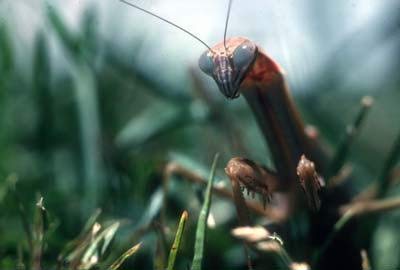Praying Mantids Wise to Sexual Cannibalism Risk

If you were a male praying mantid, the top item on your prayer list would be to survive sex.
Female praying mantids are notorious for eating males after they mate.
Now for the first time, scientists have experimentally shown that the males are hip to the risk and not too keen on being food.
The researchers toyed with the physical position of females and how hungry they were, then noted how males responded. "We know that hungry females are more likely to cannibalize and a head-on orientation makes it easier for her to attack the male with her predatory front legs," explained William Brown of SUNY-Fredonia.
The guys responded to greater risk by slowing their approach, increasing courtship behavior, and mounting from a greater—and possibly safer—distance, the scientists say.
"This shows that male mantids actively assess variation in risk and change their behavior to reduce the chance of being cannibalized," Brown said. "Males are clearly not complicit, and the act of sexual cannibalism in praying mantids is an example of extreme conflict between the sexes."
Brown and colleague Jonathan Lelito report their results in the August issue of the American Naturalist.
Sign up for the Live Science daily newsletter now
Get the world’s most fascinating discoveries delivered straight to your inbox.
(You may have heard these insects called "praying mantis," but mantis refers to the genus Mantis. "Only some praying mantids belong to the genus Mantis," according to Gary Watkins and Ric Bessin in the University of Kentucky Department of Entomology. "Mantid refers to the entire group.")
- Galleries: Bugs | Ants | Spiders
- Cannibalism Rife in Mormon Cricket Swarms
- Secret Weapons: The Insect Wars
- All About Insects











